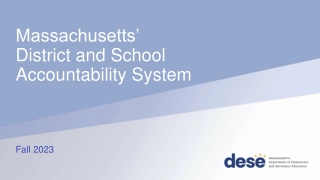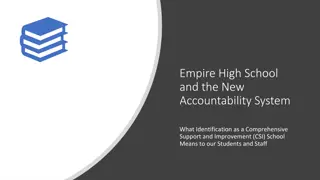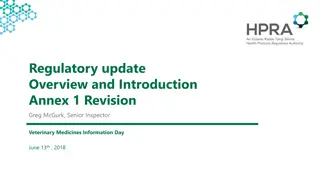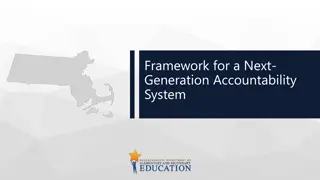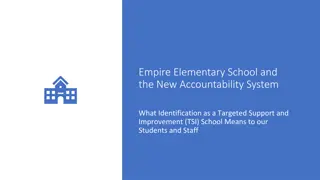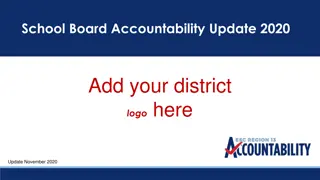School Accountability System Revision for Clarity and Credibility
The proposed House Bill 1823.70.O.S..1210.545 aims to enhance the school evaluation system by studying and recommending revisions to ensure clarity, transparency, and alignment with state assessments. Accountability indicators include academic achievement, growth, sub-group transparency, and addressing achievement gaps. The transition period and required accountability indicators for college and career readiness are also highlighted.
Download Presentation

Please find below an Image/Link to download the presentation.
The content on the website is provided AS IS for your information and personal use only. It may not be sold, licensed, or shared on other websites without obtaining consent from the author. Download presentation by click this link. If you encounter any issues during the download, it is possible that the publisher has removed the file from their server.
E N D
Presentation Transcript
House Bill 1823 70 O.S. 1210.545 The Board shall study and may recommend revisions to the Legislature to the calculation metrics of all components of the school report cards to ensure that the evaluation system is clear, transparent, statistically trustworthy, credible, and aligned with the state assessment system. 2
House Bill 1823 70 O.S. 1210.545 The Board shall issue a report by December 31, 2015, and submit a copy of the report to the Governor, the Speaker of the House of Representatives, the President Pro Tempore of the Senate, the Minority Leader of the House of Representatives, and the Minority Leader of the Senate. 3
Current Reality Transitions Oklahoma A-F Legislation 70 O.S. 1210.545 Oklahoma ESEA Flexibility Waiver Through July 31, 2016 2016-2017 School Year Transition Year for Every Student Succeeds Act USDE Requires Oklahoma to submit State Plan Next Generation School Accountability Report 4
Suggested Accountability Indicators Academic Achievement (Reading, Math, Science) Academic Growth (Cohort Groups) Transparency of All Sub-Groups (Reading, Math, Science and Graduation Rate) Achievement Gaps Participation Rate 95% Chronic Absenteeism 5
Suggested Accountability Indicators College and Career Ready Postsecondary and Career Readiness Coursework (AP, Dual Enrollment, CTE, etc.) Exams (ACT, PSAT, SAT, AP, CTE, etc.) 6
Suggested Accountability Indicators College and Career Ready Graduation - On-Track in 9th Grade oPercentage of 9th graders earning enough credits to be on track for graduation Graduation 4-Year and 6-Year Adjusted Cohort Graduation Rate Postsecondary Entrance Rate All Students (Higher Ed, Career Tech, Military) 7
ESSA Performance Indicators Accountability System requirements still exist but there is some latitude. ESSA states that the indicators must include: 1. Academic Indicators Academic achievement based on annual assessments A measure of student growth or statewide academic indicator for elementary and middle schools Graduation rates for high schools based on state goals English proficiency based on state goals 8
ESSA Performance Indicators Accountability System requirements still exist but there is some latitude. ESSA states that the indicators must include: 2. Measure of school quality and student success At least one measure of school quality or student success (examples are listed including student and educator engagement, access and completion of advanced coursework, postsecondary readiness, school climate and safety, and another state selected indicator.) 9
ESSA Performance Indicators Accountability System requirements still exist but there is some latitude. ESSA states that the indicators must include: 3. Participation 95% participation of all students & subgroups on State required assessments. 4. Identification of low performing schools and interventions to support them The 5% lowest performing in the State as determined by the State s criteria and differentiation process will be identified. 1 0


